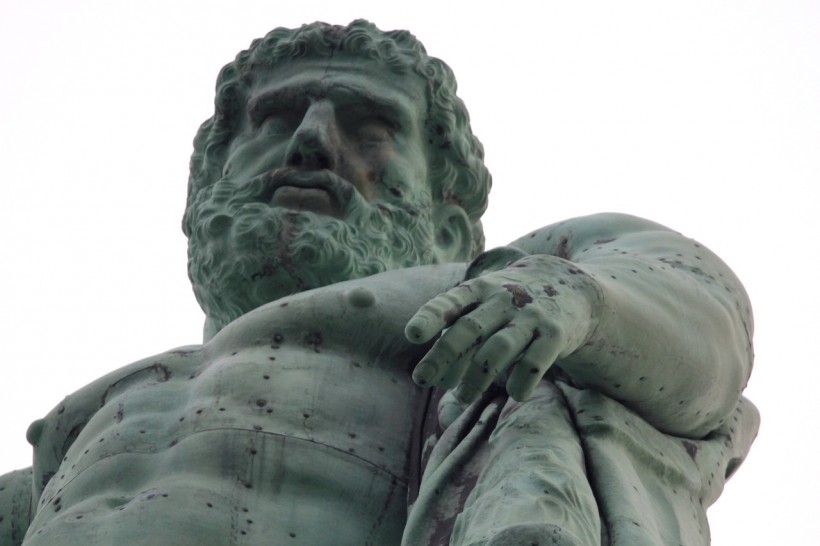A recently discovered statue in Rome purports to portray the murdered Roman emperor Decius dressed as Hercules. Emperor Decius, whose full name is Gaius Messius Quintus Trajanus Decius, only reigned for two years between 249 to 251 A.D. According to Live Science, the Goths murdered him and his son at the Battle of Abritus in 251 A.D., in what is now Bulgaria.
Archaeologists hope that the discovery may provide insight into the perspective of a Roman emperor who favored traditional Greco-Roman gods during a period when Christianity was growing throughout the empire.

Life-sized Statue of a Roman Emperor Posing as Hercules Was Discovered, Implying There Could Be More Hidden That Remains To Be Found
Emperor's Statue Found During Sewer Repairs
The statue was discovered along the Via Appia, a key road from Rome to Brundisium (Brindisi) in southern Italy. Archaeologists from the Parco Archeologico dell' Appia Antica claimed in a statement posted on Facebook that it was discovered during sewer repairs in Parco Scott, a park in Rome. Experts said that the statue was most likely put in the trench during the last 100 years.
The statue depicts a human dressed in the skin of the Nemean lion, a beast killed by Hercules during one of the 12 tasks he was required to do. Interestingly, the statue's visage is not that of Hercules.
Upon careful examination by comparing it to existing portraits of Emperor Decius, archaeologists discovered that it resembles him. The creases on the faces are identical, as do the eyes, nose, lips, and beard. Several researchers who were not participating in the study believe that the face is reminiscent of Decius.
Vrije University Amsterdam researcher Sam Heijnen told Live Science in an email that the short-cropped hair and beard are also the same as the known representation of Decius.
Heijnen noted that there are not a lot of statues of so-called soldier emperors of the Roman Empire between 235 and 284 A.D. It was a time of rapid succession of over 20 emperors in less than half a century when the borders of the Roman empire were under constant pressure.
Even some scholars agree that it could be Decius' statue. Kenan eminent professor James Rives from the University of North Carolina also told Live Science that the iconography is expected of Hercules but that it looks more like the portraits of Decius.
More Archaeological Treasures Still Hidden in the Area
Experts said that the statue's design might be due to Decius' emphasis on his traditional religious beliefs, which makes sense why it is dressed as Hercules. It was a time when Christianity was becoming popular in Rome and historical records suggest that the emperor emphasizes the worship of traditional Greco-Roman gods.
Professor David Potter told Live Science that it is probably impossible to know whether Emperor Decius himself was behind it or somebody else commissioned the statue.
Nonetheless, ABC News reports that the discovery shows that archaeologists believe that there is much more that remains hidden despite all archaeological discoveries made in Rome. With Rome's ancient history, finding more archaeological treasures is expected in the streets or parks of the city.
RELATED ARTICLE: Hidden Roman Aqueduct Found in Naples; Scientists Kick Off Exploration of One of the Longest Ancient Water Infrastructure
Check out more news and information on Archaeology in Science Times.



![Earth's Quasi-Moon Kamo‘oalewa Could Originate From Lunar Surface Not Asteroid Belt [Study]](https://1721181113.rsc.cdn77.org/data/thumbs/full/53275/89/56/50/40/earths-quasi-moon-kamo-oalewa-could-originate-from-lunar-surface-not-asteroid-belt-study.png)










